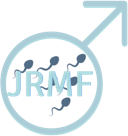Fertility Futures Meeting in London, Tuesday 9 July 2019
Two weeks ago, we took advantage of our friend Paul Turek’s visit to the UK with his family, to host a Symposium in London. This was a meeting of friends, all passionate about treating fertility, so that we could learn from each other, and create a meeting of minds among clinical and scientific opinion leaders.
This was not a “conference”. Conferences, although informative, have several disadvantages! Medical conferences can bring out the worst in professionals; the presentations tend to a theme of “look what I have done”, and our naturally competitive nature makes us a bit secretive, which limits proper discussion. This meeting was different. 20 people around one table, up-close, and not only talking, but also listening to each-other.
So who were the people?
Of course, Scientists; Professor Sheena Lewis and Dr Sheryl Homa, but also the workers, the Embryologists (Claire Mooney, Erica Foster and Dhalia Khalifa from Hammersmith). So we could bring together those who study sperm, with those who prepare and use it.
What about the doctors?
Lord Robert Winston set the scene with his unique experience of fertility treatment, ever since his own pioneering work at Hammersmith. This followed the birth of the first test-tube baby, Louise Brown.
We had Andrological (Urologists) Surgeons from UCLH (Pippa Sangster) and Tet Yap from Guy’s Hospital. But we don’t just need Surgeons, we need Endocrinologists who are increasingly helping men to make sperm, and thus helping us to retrieve useful sperm from critical cases. So my friends Dr Channa Jayasena, and Dr Sheba Jarvis, brought new insights to the party.
My new urological colleague at Hammersmith, Lorna Vyas, helped me to manage the event, and she is already working very hard with my friend Suks Minhas to develop the vital research programmes at Imperial College.
What about treatments?
It was good to hear from Melanie Brown; London’s “go-to” Nutritionist for male fertility. Channa Jayasena’s work on obesity and male fertility, funded by a large National research grant, chimes nicely with Melanie’s recent MSC thesis on the same subject, but perhaps most importantly we all agreed that antioxidants in men with measurable levels of oxidative stress, both in the seminal fluid and actually attached to the sperm, have measurable benefits in sperm DNA fragmentation improvements.
This was followed by a really useful discussion about the use of testicular sperm when we cannot improve the DNA quality of sperm, in couples who have failed several cycles of ICSI and IVF.
How should we prepare this sperm? and is it really better? Professor Sheena Lewis has shown that testicular sperm has better DNA quality, and Marie Wren from the Lister expects this to be a useful innovation in terms of live-births, when we have enough data to prove it.
So that we did not focus too much on our own clinical and sometimes narrow views of the whole subject, we also heard from Michael Close, who has done much to further the treatment and investigation of male fertility, through his company, Logix, and from Judy Taylor, who has great experience in market research, looking at our patients’ preferences and views.
All this talking was thirsty work, and so we finished the meeting in traditional style, with a good dinner, which probably included rather too many oxidants!
We have all agreed to try to repeat the meeting on an annual basis, so that we can all coordinate our efforts, and maintain strong friendships; the basis of collaborative research.
I thought this ‘behind-the-scenes’ event was important to share with you. I hope you agree.


0 Comments